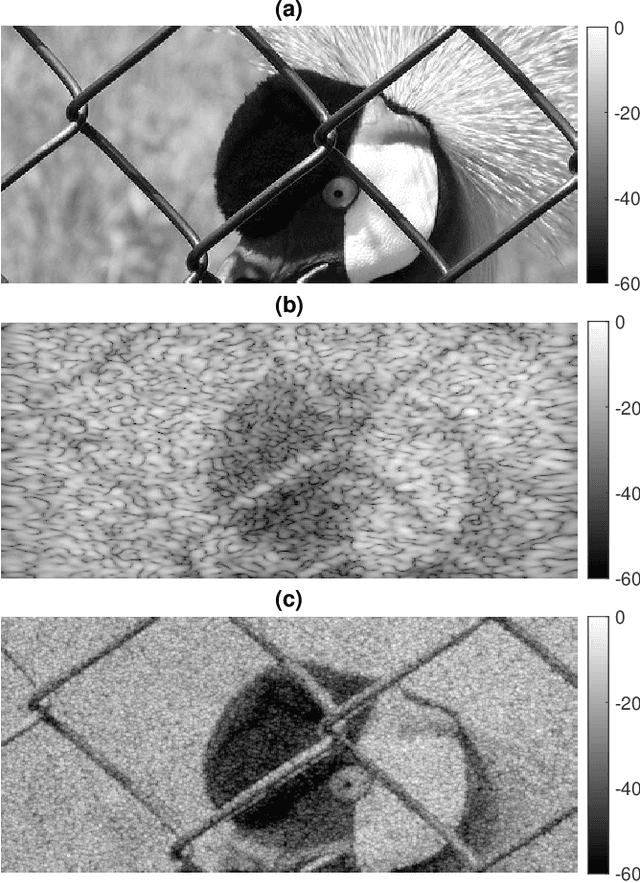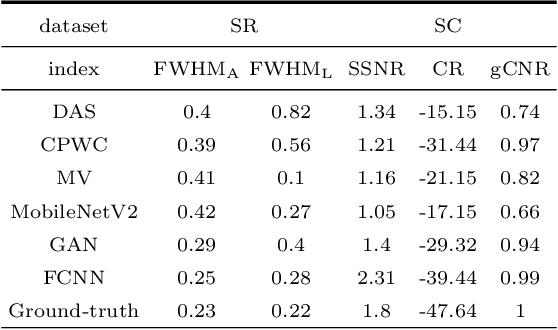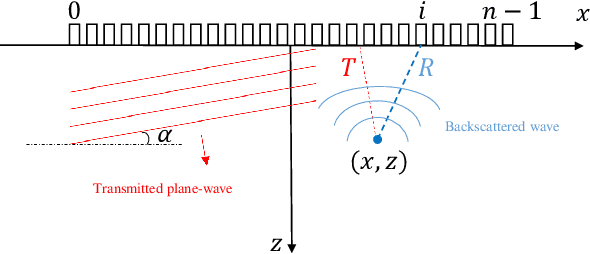Plane-Wave Ultrasound Beamforming: A Deep Learning Approach
Paper and Code
Sep 27, 2021



Medical ultrasound provides images which are the spatial map of the tissue echogenicity. Unfortunately, an ultrasound image is a low-quality version of the expected Tissue Reflectivity Function (TRF) mainly due to the non-ideal Point Spread Function (PSF) of the imaging system. This paper presents a novel beamforming approach based on deep learning to get closer to the ideal PSF in Plane-Wave Imaging (PWI). The proposed approach is designed to reconstruct the desired TRF from echo traces acquired by transducer elements using only a single plane-wave transmission. In this approach, first, an ideal model for the TRF is introduced by setting the imaging PSF as a sharp Gaussian function. Then, a mapping function between the pre-beamformed Radio-Frequency (RF) channel data and the proposed TRF is constructed using deep learning. Network architecture contains multi-resolution decomposition and reconstruction using wavelet transform for effective recovery of high-frequency content of the desired TRF. Inspired by curriculum learning, we exploit step by step training from coarse (mean square error) to fine ($\ell_{0.2}$) loss functions. The proposed method is trained on a large number of simulation ultrasound data with the ground-truth echogenicity map extracted from real photographic images. The performance of the trained network is evaluated on the publicly available simulation and \textit{in vivo} test data without any further fine-tuning. Simulation test results confirm that the proposed method reconstructs images with a high quality in terms of resolution and contrast, which are also visually similar to the proposed ground-truth image. Furthermore, \textit{in vivo} results show that the trained mapping function preserves its performance in the new domain. Therefore, the proposed approach maintains high resolution, contrast, and framerate simultaneously.
 Add to Chrome
Add to Chrome Add to Firefox
Add to Firefox Add to Edge
Add to Edge